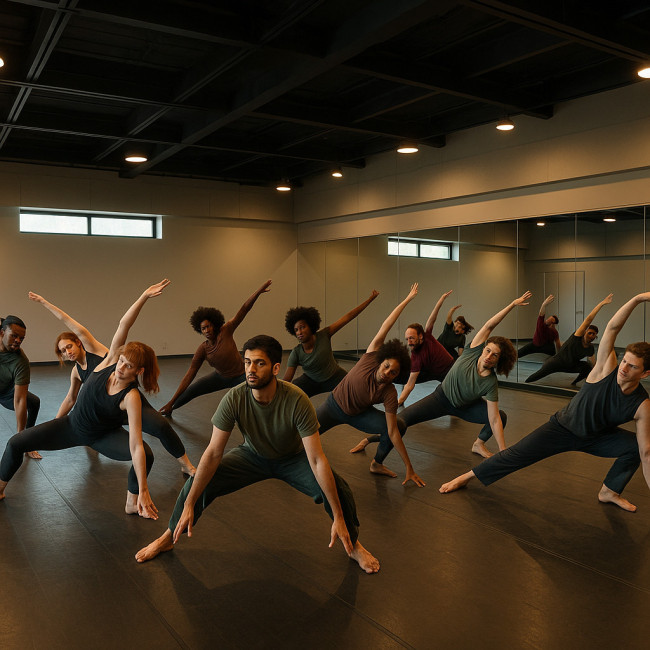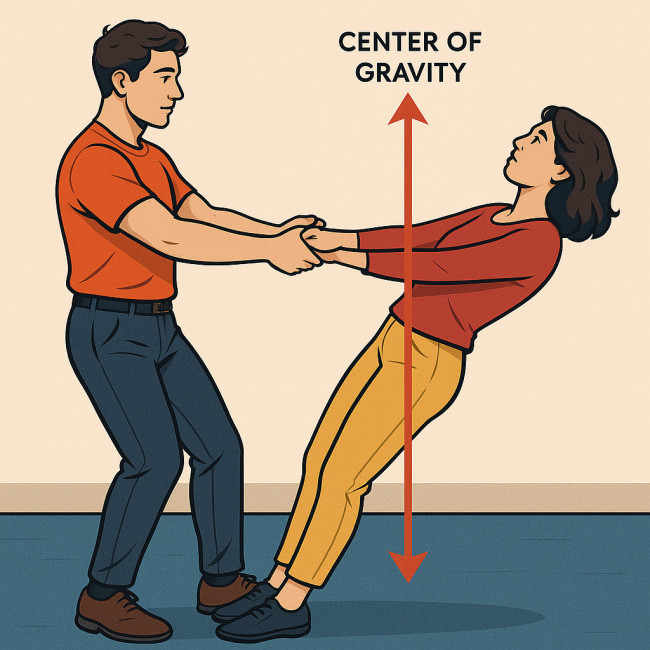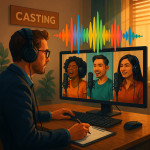Movement labs for actors: master physical storytelling without risking injuries
Do you want to command the stage with confident, injury-free movement? This guide shows you how to set up and follow a movement lab that sharpens physical storytelling while keeping joints, muscles and focus intact.
Why movement labs matter in modern acting
Directors now expect performers to switch effortlessly between dialogue, dance-inspired blocking and stunts. A structured movement lab offers the safe playground you need to explore range, elasticity and character embodiment without gambling on last-minute experimentation during tech week.
Investing time in a lab also boosts cast cohesion. Shared physical vocabularies cut rehearsal time and amplify non-verbal cues that casting teams notice on your casting profile.
Core principles of a safe movement lab
Qualified facilitators with cross-disciplinary expertise
Choose instructors who blend somatic practices, sports science and theatre pedagogy. Their range lets them adapt drills to various body types and injury histories, ensuring every actor feels included and challenged.
Progressive warm-ups and cooldowns
- Start with breath-led joint mobilisations.
- Raise heart rate with dynamic stretches, not static holds.
- Finish sessions with guided myofascial release to drop cortisol and aid recovery.
Evidence-based injury prevention protocols
Follow the 10 % rule: never raise intensity or duration by more than ten percent per week. Document any pain in a shared log so facilitators can adjust drills before micro-traumas snowball into show-stopping injuries.
Designing your movement lab: space, gear and schedule

Before you roll out the marley or source resistance bands, visualise the movement lab as a holistic ecosystem. Think about ventilation, sight-lines for the facilitator, storage cubbies that keep foam rollers out of traffic lanes, and acoustic panels that dampen footfall so verbal feedback remains clear. Include a hydration station, a wall-mounted tablet for quick video playbacks and a digital clock that helps actors self-manage rest intervals. Those seemingly small environmental tweaks translate into fewer on-set injuries and sharper storytelling because the brain no longer wastes bandwidth navigating clutter.
Room layout
A 10 × 10 m studio fits twelve actors comfortably. Mark clear traffic lanes to avoid mid-exercise collisions.
Flooring comparison
| Floor Type | Shock Absorption | Slip Resistance | Ideal Use |
|---|---|---|---|
| Harlequin sprung | High | Medium | High-impact jumps |
| Marley roll-out | Medium | High | Slide-based choreography |
| Polished wood | Low | Variable | Tap or percussive work |
Essential props
- Resistance bands for joint-friendly strength work.
- Foam rollers and massage balls for cooldown.
- Low-profile mats for grounding floor sequences.
Sample six-week schedule
- Week 1–2: Alignment and breath fundamentals.
- Week 3–4: Partner lifts and counterbalance.
- Week 5: Character gait exploration.
- Week 6: Scene integration with props and costumes.
Top exercises that sharpen storytelling and protect joints

Every drill in a movement lab should read like a sentence in a physical language, complete with punctuation and subtext. Whether you are spiralling down to the floor or magnifying a fingertip gesture, catalogue the action with verbs—curl, extend, suspend—so partners can cue corrections in real time. Integrate breath counts that mirror dialogue rhythms, and always finish by scanning joints for heat or tightness. The goal is incremental adaptation: muscles remember velocity curves, tendons register load tolerance, and you, the actor, gain a library of embodied choices that directors can quote like lines of dialogue.
1. Spiral rolls
Roll diagonally across the torso while keeping limbs loose. The spiral distributes load and minimises impact, making floor work safer.
2. Neutral spine weight shifts
Transfer weight from heel to forefoot without locking knees. Actors learn grounded stances that read as calm authority on camera.
3. Gesture amplification
Take a natural hand movement and scale it to stage-filling size. This builds proprioception and tests range limits under supervision.
4. Partner counterbalances
Actors pair up, leaning away while sharing a centre of gravity. The exercise trains trust and highlights the micro-adjustments required to keep scenes fluid.
Integrating movement labs into rehearsal workflow
Schedule labs at the start of the day. Warm muscles process scene notes better, and the shared pulse sets a unified creative tone. If you already attend vocal training sessions, sandwich them between movement drills and line runs to avoid vocal fatigue.
Document progress
Use smartphone video for weekly before-and-after clips. Short edits feed your showreel and let directors preview physical growth, especially after you refine edits with guidance from expert showreel flow techniques.
Common mistakes and how to avoid them
- Skipping recovery: DOMS can spike injury risk. Prioritise sleep, hydration and foam rolling.
- Using single-speed drills: Vary tempo to build control. Sudden speed changes on set then feel natural, not risky.
- Ignoring pain signals: Sharp or localised pain is a red flag. Adjust or pause the exercise immediately.
Interactive quiz: check your movement-lab readiness
FAQ
- How often should actors attend a movement lab?
- Two to three sessions per week strike a balance between skill acquisition and muscle recovery.
- Can I run a lab without expensive flooring?
- Yes, layer marley on top of interlocking foam tiles for a budget-friendly, shock-absorbing surface.
- Is a movement lab useful for screen actors?
- Absolutely. Micromotion reads clearly in close-ups, and labs build the subtle control that on-camera work demands.
Take the next step
Ready to design your own injury-proof practice? Compare venues in your city or explore dedicated external acting workshops. You can also browse specialised actor training resources to find certified facilitators near you.
CTA: Block your first lab session this week, update your profile with new skills, and let your body narrate roles with confidence.











